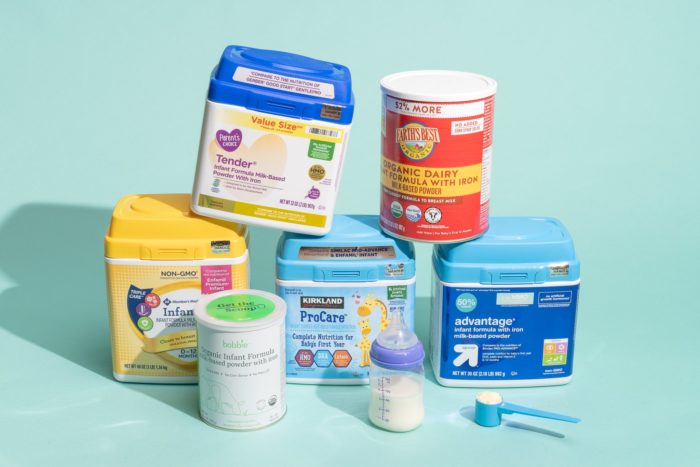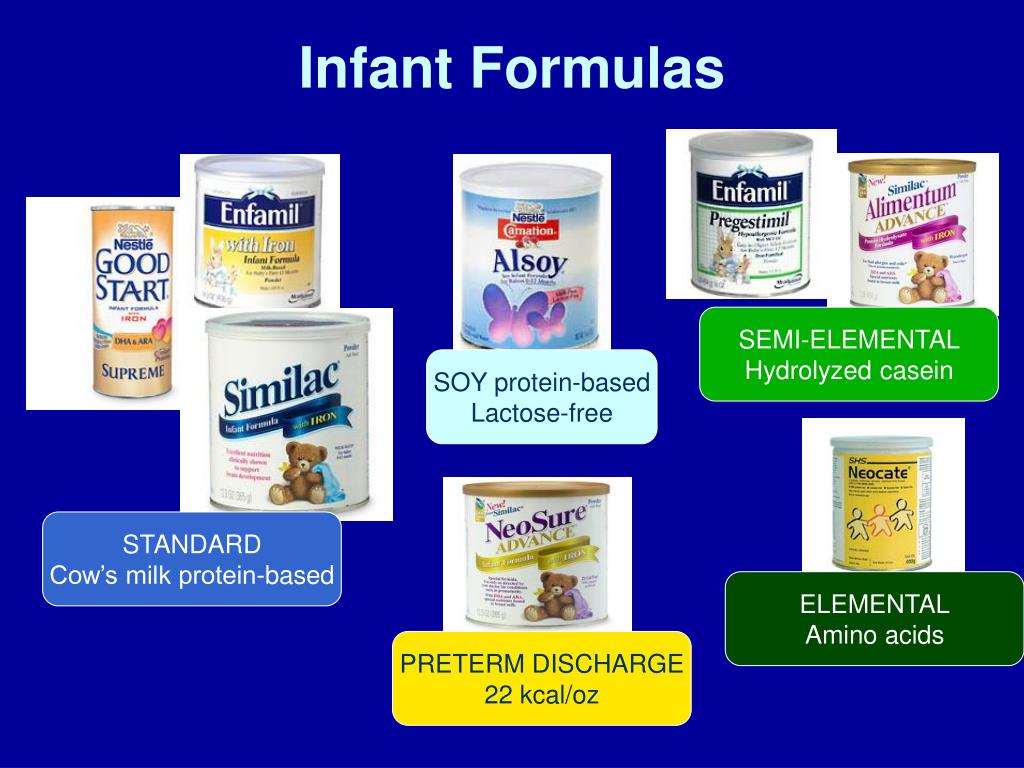The hydrolyzed protein-based formula, a revolutionary infant formula that has been meticulously broken down into smaller pieces, is causing quite a stir in the world of baby nutrition. Parents and health care professionals alike are marveling at its potential to alleviate digestive issues in infants who struggle with traditional cow’s milk-based formulas due to pesky allergies or sensitivities.

But choosing the right hydrolyzed formula for your little one can be dizzying – there are so many factors to consider! Every baby is different, after all, and their unique needs must be taken into account. That’s why it’s important to do your research before making any decisions.
There are two types of hydrolyzed formulas: partially hydrolyzed and extensively hydrolyzed. The former contains larger protein molecules than the latter, which could make them less effective at managing allergies or sensitivities. It’s crucial to keep this in mind when selecting the best option for your precious bundle of joy.
Fortunately, hypoallergenic baby formula options abound for infants with milk protein allergy! Both partially and extensively hydrolyzed options exist on the market today – but beware! Even these specially crafted formulations may contain traces of allergens that could trigger a reaction in sensitive individuals. Always work closely with your pediatrician when embarking on this journey towards better nutrition for your little one!
The Importance of Choosing the Right Protein Source for Your Baby’s Formula
The selection of an appropriate formula for your baby can leave you feeling perplexed. One crucial factor that requires consideration is the protein source. Recently, hydrolyzed protein-based formulas have been gaining popularity due to their potential benefits for infants with milk protein allergy or intolerance. These formulas contain proteins that have undergone partial or extensive breakdown into smaller molecules, making them easier to digest.

For infants with a milk protein allergy, hypoallergenic formulas provide another alternative. These specialized formulas are made from extensively hydrolyzed proteins or amino acids, rendering them hypoallergenic. In fact, pediatricians may even recommend hypoallergenic baby formula as the first-line treatment in cases of suspected cow’s milk allergy.
Nevertheless, it’s worth noting that not all babies require a hydrolyzed or hypoallergenic formula for optimal health and development. Most healthy infants thrive on regular infant formula containing intact proteins sourced from cows’ milk or soybeans. However, if you suspect your little one has an allergy or intolerance to cow’s milk protein, consulting your pediatrician about switching to a hydrolyzed or hypoallergenic formula may be necessary and appropriate for their needs.
Hypoallergenic Formula Options for Infants with Milk Protein Allergy
For those little ones suffering from milk protein allergy, a hypoallergenic formula is the way to go. These specialized formulas boast hydrolyzed protein that has been broken down into smaller pieces for easy digestion. But hold on, there are two types of these formulas: partially and extensively hydrolyzed.
The first type, partially hydrolyzed formula, contains proteins that have undergone only partial breakdowns. It’s typically used as step one for babies who display intolerance toward regular milk formula but fail to exhibit severe allergies. However, let’s not forget – some infants with milk protein allergy may still react negatively to this option.
On the flip side – no pun intended- extensively hydrolyzed formula boasts proteins completely broken down into minuscule fragments. This option is recommended for infants confirmed with milk protein allergy or those experiencing grave symptoms such as anaphylaxis when exposed to cow’s milk or whey and casein (the main proteins found in cow’s milk).
It’s imperative you select the correct infant formula if your baby suffers from known or suspected milk protein allergy. Get advice from your pediatrician about which hypoallergenic option would work best for your little one’s needs since every child responds differently; it might take some trial-and-error before discovering a perfect fit!
Extensively Hydrolyzed Formula: Which is Best for Your Baby?
The selection of the appropriate protein source for your baby’s formula is a perplexing matter when it comes to infant feeding. Extensively hydrolyzed formulas (EHF) are an enigmatic form of hypoallergenic baby formula that contain proteins which have been fragmented into smaller pieces than partially hydrolyzed whey or casein protein, found in standard formulas. This creates an explosive effect and makes them easier for babies with milk protein allergy or intolerance to digest.
EHFs usually incorporate hydrolyzed whey protein as their primary constituent, which has been demonstrated to be more effortlessly digested by infants compared to intact protein present in regular formula. Astonishingly enough, studies have proven that EHF may decrease the risk of developing allergies in high-risk infants relative to standard formulas.
If your little one has a confirmed milk allergy or intolerance, then an extensively hydrolyzed formula might be recommended by your pediatrician. Nevertheless, if your child only experiences mild symptoms or is at low risk for developing allergies, then a partially hydrolyzed whey protein formula (PHF) or soy-based solution could potentially suffice.
It’s important to note that although EHFs are meticulously engineered for easy digestion and reduced allergenicity potentialities, they may not work effectively on every infant with milk allergy or intolerance. Some babies still experience symptoms even after being fed EHF and require further evaluation from their healthcare provider before attempting another alternative format.
European Hypoallergenic Formula: What You Need to Know
Parents face a perplexing challenge when selecting the perfect protein infant formula for their little one. The considerations are manifold, encompassing a range of complex needs that must be weighed and balanced with care. For infants suffering from milk protein allergies, partial hydrolyzed formulas may provide welcome relief as they contain proteins partially broken down into more digestible fragments. However, fully hydrolyzed options may prove more effective at mitigating allergy symptoms in certain babies due to smaller protein molecules.
Amidst this burst of information, it’s easy to feel overwhelmed and unsure about what is best for your baby. Fear not – there are experts who can assist you in determining which type of formula would be optimal for your little one’s unique situation.
For those seeking a gentle European hypoallergenic formula, Hipp HA Formula may fit the bill perfectly. Alas, increased demand has recently led to shortages of this particular brand on the market. Nevertheless, parents should keep in mind that other alternatives exist and consulting with their pediatrician will enable them to make an informed decision that suits their child’s specific requirements like a glove!
How to Determine if a Hydrolyzed Formula is Right for Your Baby
Choosing the perfect formula for your precious bundle of joy can be a perplexing task. One must take into consideration if their baby has an allergy to cow’s milk protein, which requires a hydrolyzed formula. These formulas consists of proteins that have been broken down into smaller pieces, making it easier for babies to digest.
There are two types of hydrolyzed formulas: partially and extensively hydrolyzed. The former still contains some intact cow’s milk protein while the latter does not. If you’re uncertain whether or not a hypoallergenic formula is necessary for your baby who may have a cow’s milk protein allergy, try temporarily switching them to a cow’s milk formula and observe how they react.
Should you decide that extensively hydrolyzed whey protein-based formula is ideal for your little one, there are numerous options available in today’s market. With European hypoallergenic formulas gaining popularity in the United States due to their top-notch ingredients and stringent regulations, choosing the right brand or type of infant formula can be truly overwhelming! Pay close attention to any changes in behavior or digestion as you make adjustments to their diet since ultimately only you know what works best for your child!
Finding the Best Protein Infant Formula for Your Little One’s Needs
The task of discovering the right concoction for your little one can be a perplexing and overwhelming process. A partially hydrolyzed formula is an option to ponder, as it contains proteins that have been fractured into smaller fragments. This type of formula may aid some infants in digestion and could even diminish the likelihood of developing allergies.
A specific choice in this category is a blend that is partially hydrolyzed with casein protein. For babies who struggle with traditional cow’s milk-based formulas but do not require an extensively hydrolyzed formula, this blend may prove beneficial. It should be noted that determining whether or not your baby necessitates a partially hydrolysed formula hinges on their individual needs and ought always to be discussed with their healthcare provider.
Another avenue worth exploring is a hydrolyzed whey protein formula which fractures the proteins found in cow’s milk into smaller shards making them easier for tiny tummies to handle. This type of formula also has potential benefits for infants who are at risk of contracting allergies or face difficulties tolerating other kinds of formulas.
Ultimately, identifying the perfect formulation for your precious progeny demands careful consideration and consultation with their healthcare provider. While there exists myriad options available on the market, selecting an excellent formulation based on your child’s unique requirements will ensure they receive optimal nutrition during this critical stage of development.
Tips for Successfully Transitioning Your Baby to a Hydrolyzed Formula
Transitioning your little one to a hydrolyzed formula can be quite the perplexing endeavor, but fear not! With a burst of patience and the right approach, success is within reach. The initial step involves consulting with your trusty pediatrician to determine which type of formula would best suit your baby’s individual needs – either partially or extensively hydrolyzed formulas.
It’s important to keep in mind that every baby has their own unique level of formula tolerance. Begin by gradually introducing the new formula, adding increasing amounts to their current full-formula until they’re fully transitioned. This allows ample time for their digestive system to adapt and adjust accordingly.
Careful observation during this process is key; if you notice any signs of discomfort such as fussiness or excessive spitting up, don’t hesitate to discuss adjusting ratios with your doctor or perhaps even trying out an alternative type of hydrolyzed formula.
Remember: providing top-notch nourishment for your growing babe is paramount for healthy development. By exercising patience and attentive care, rest assured that they’ll receive all necessary nutrients while digesting regular formulas without issue.

